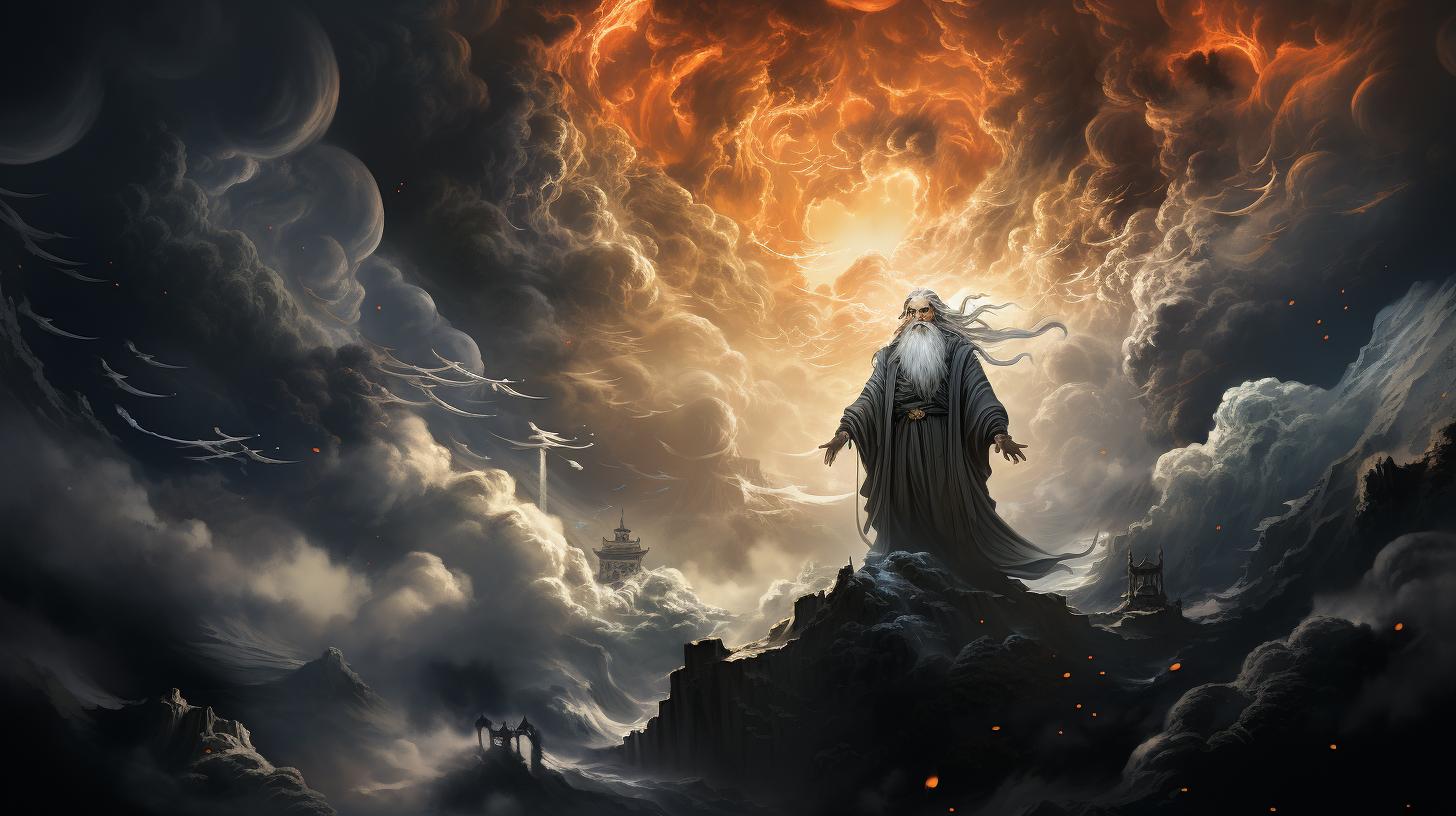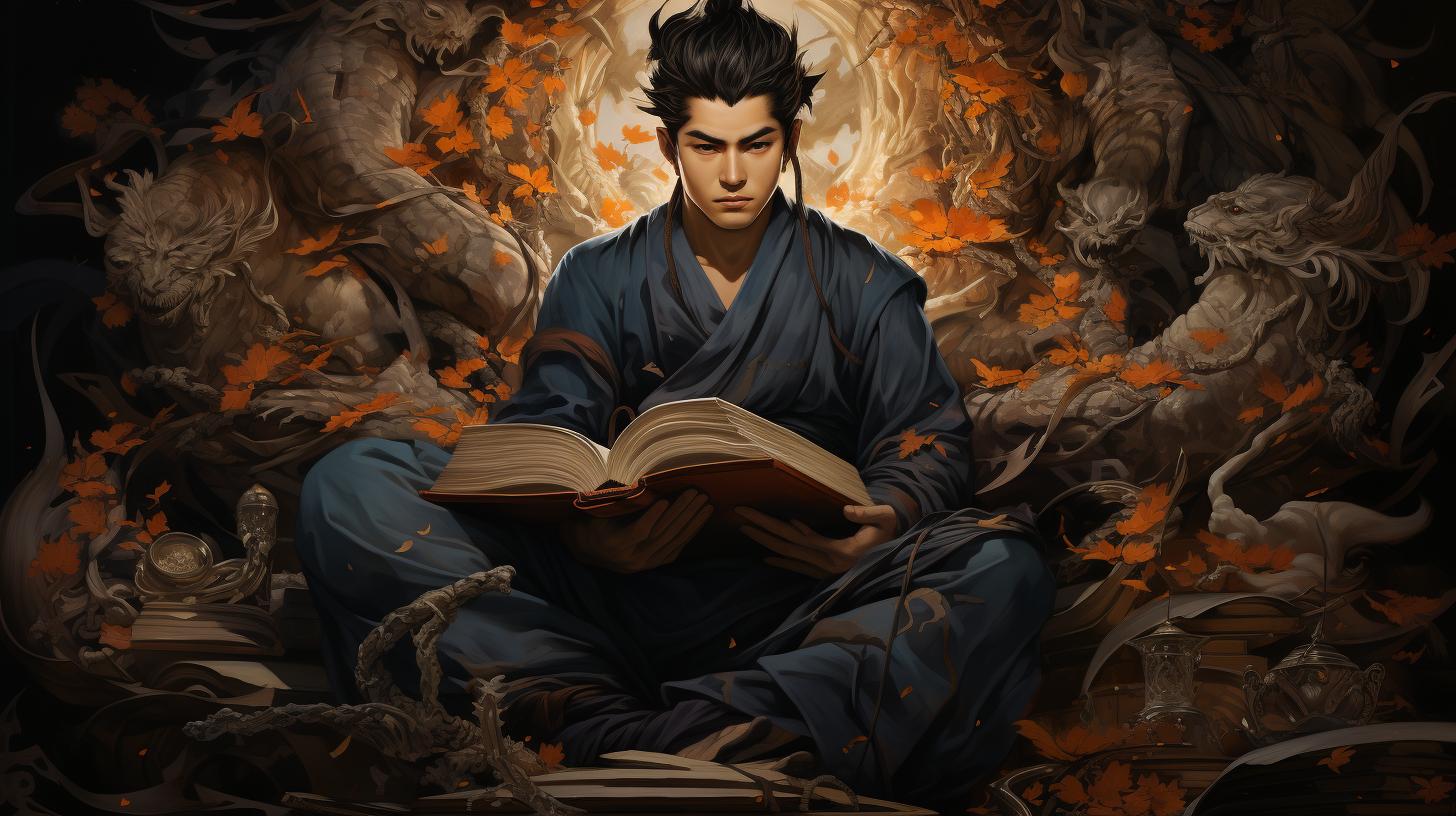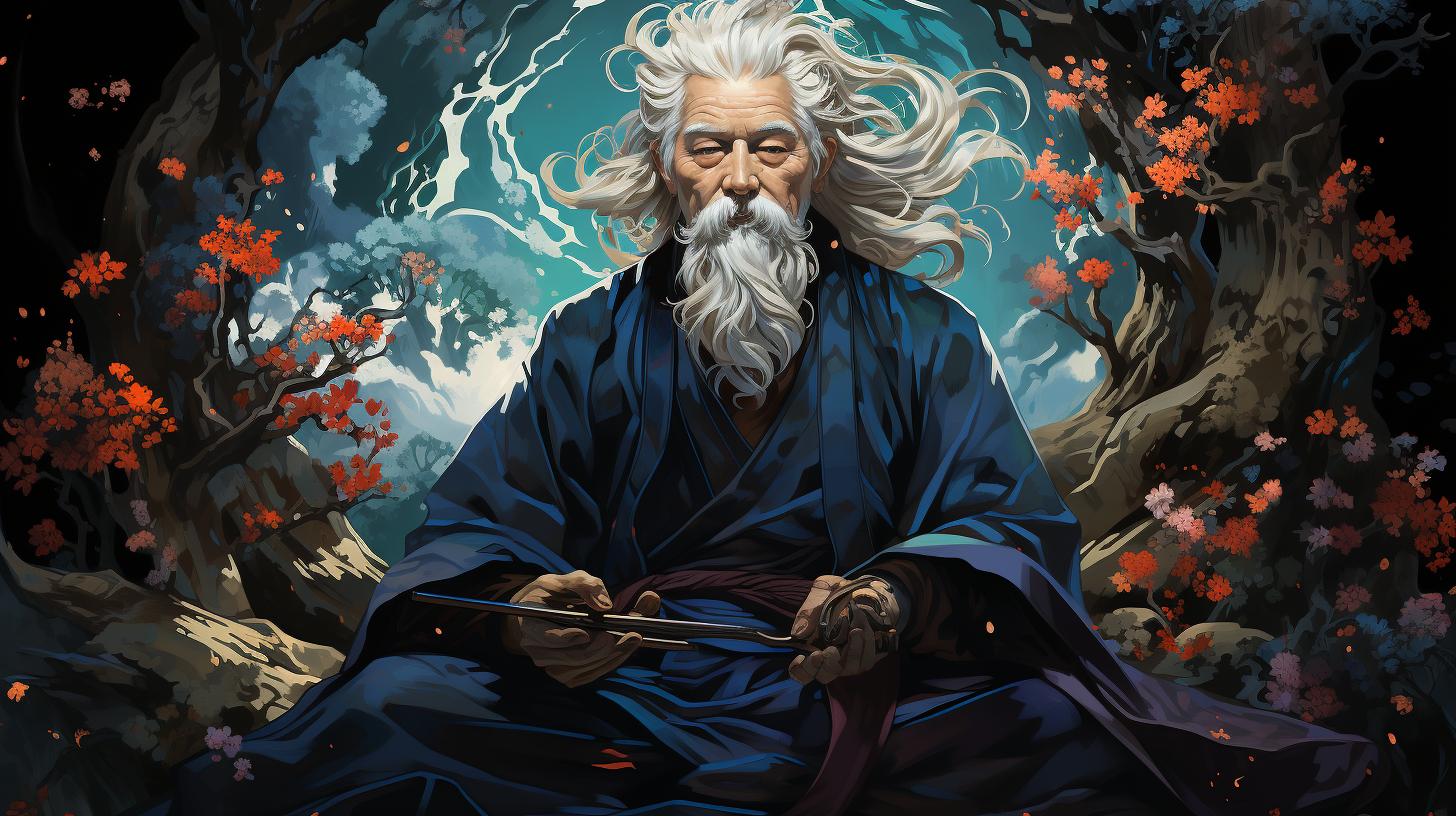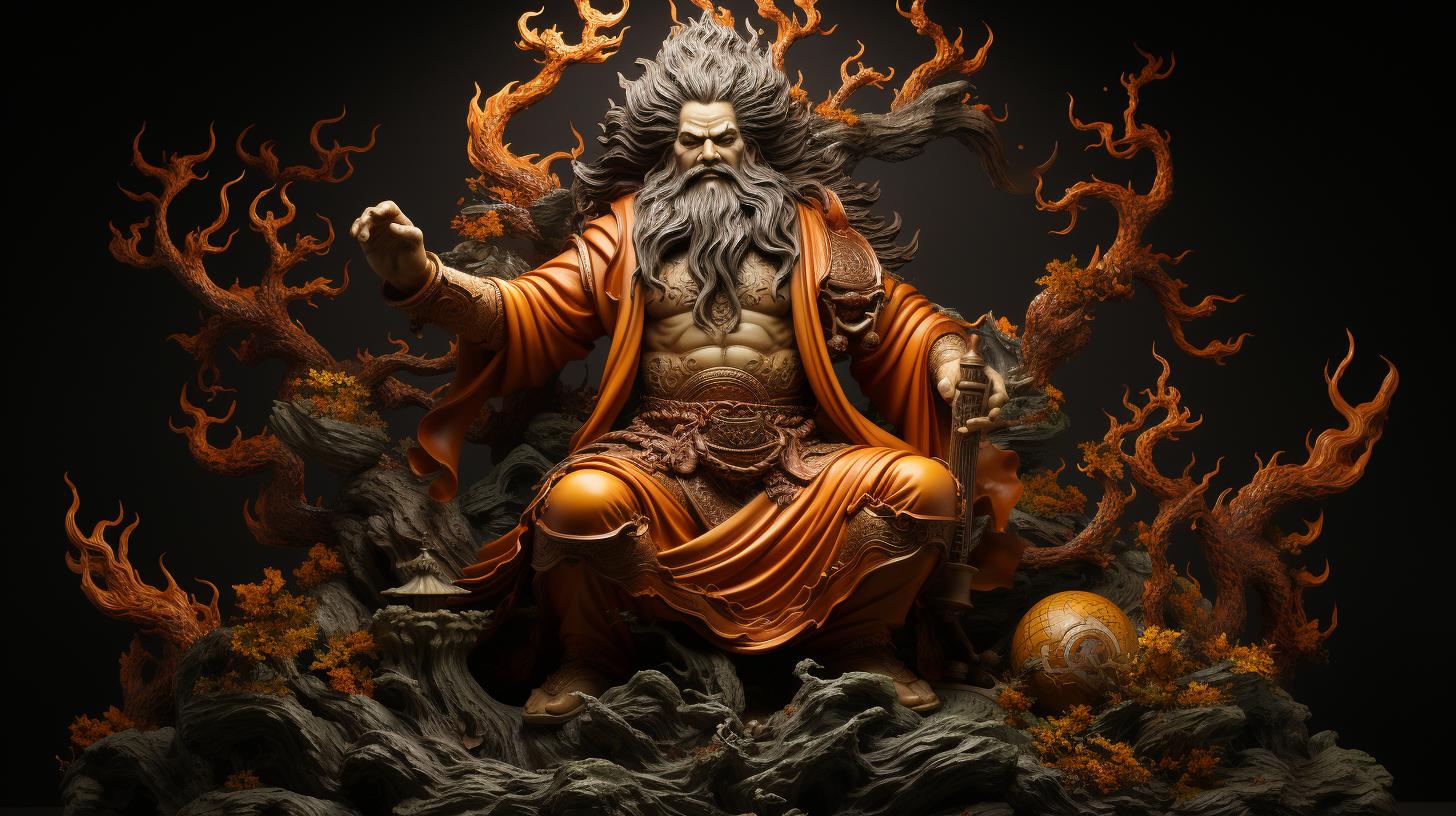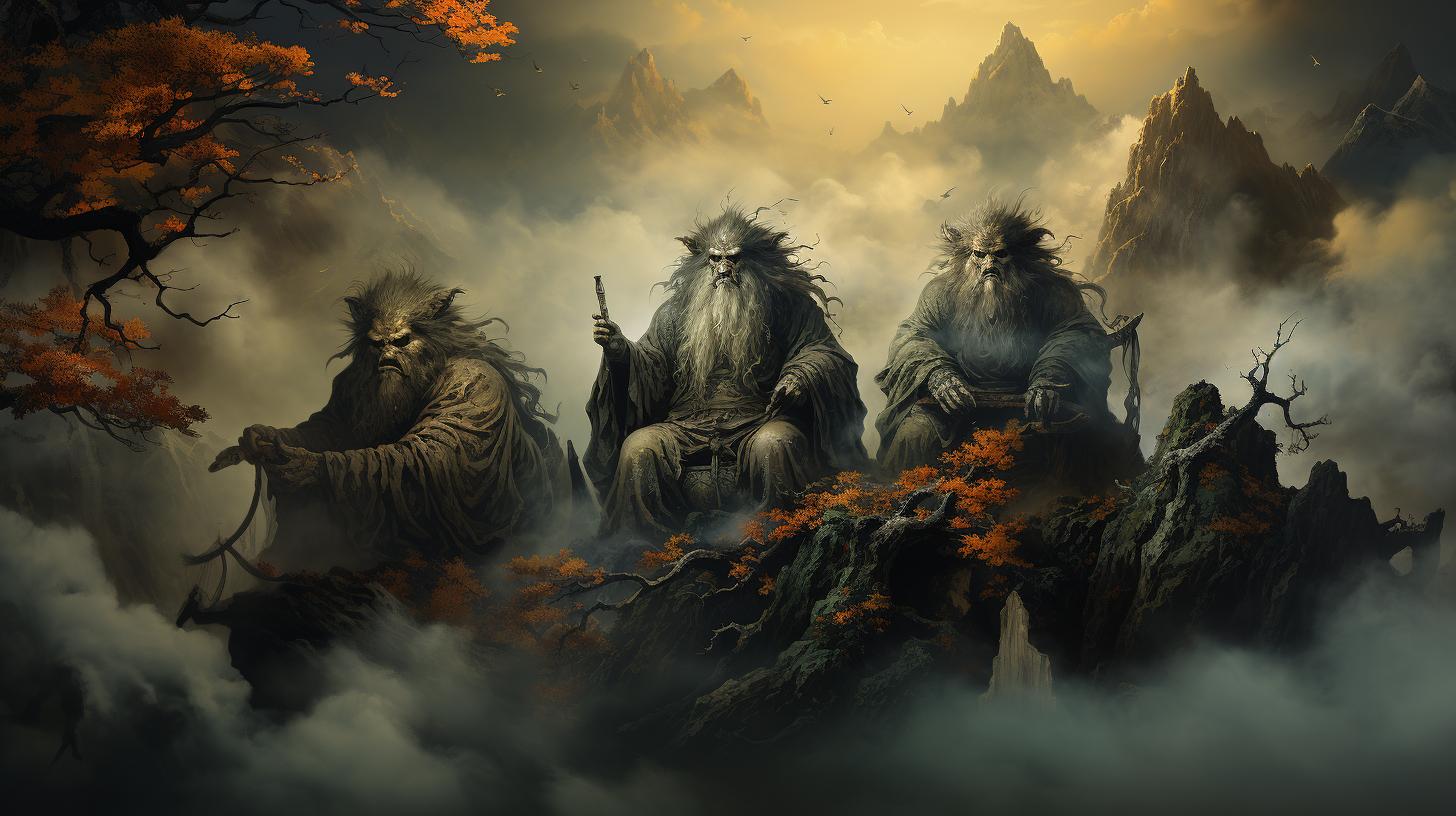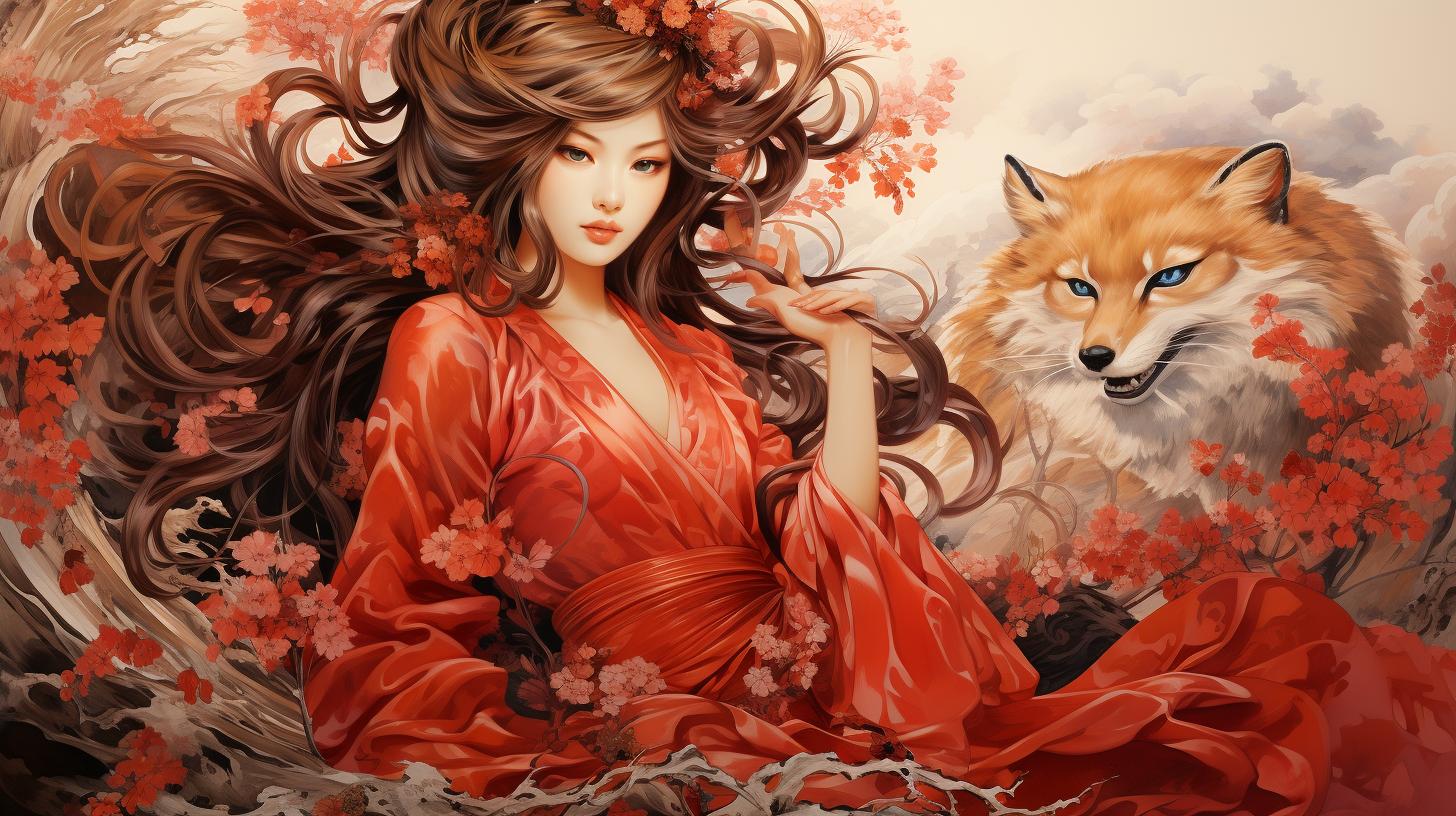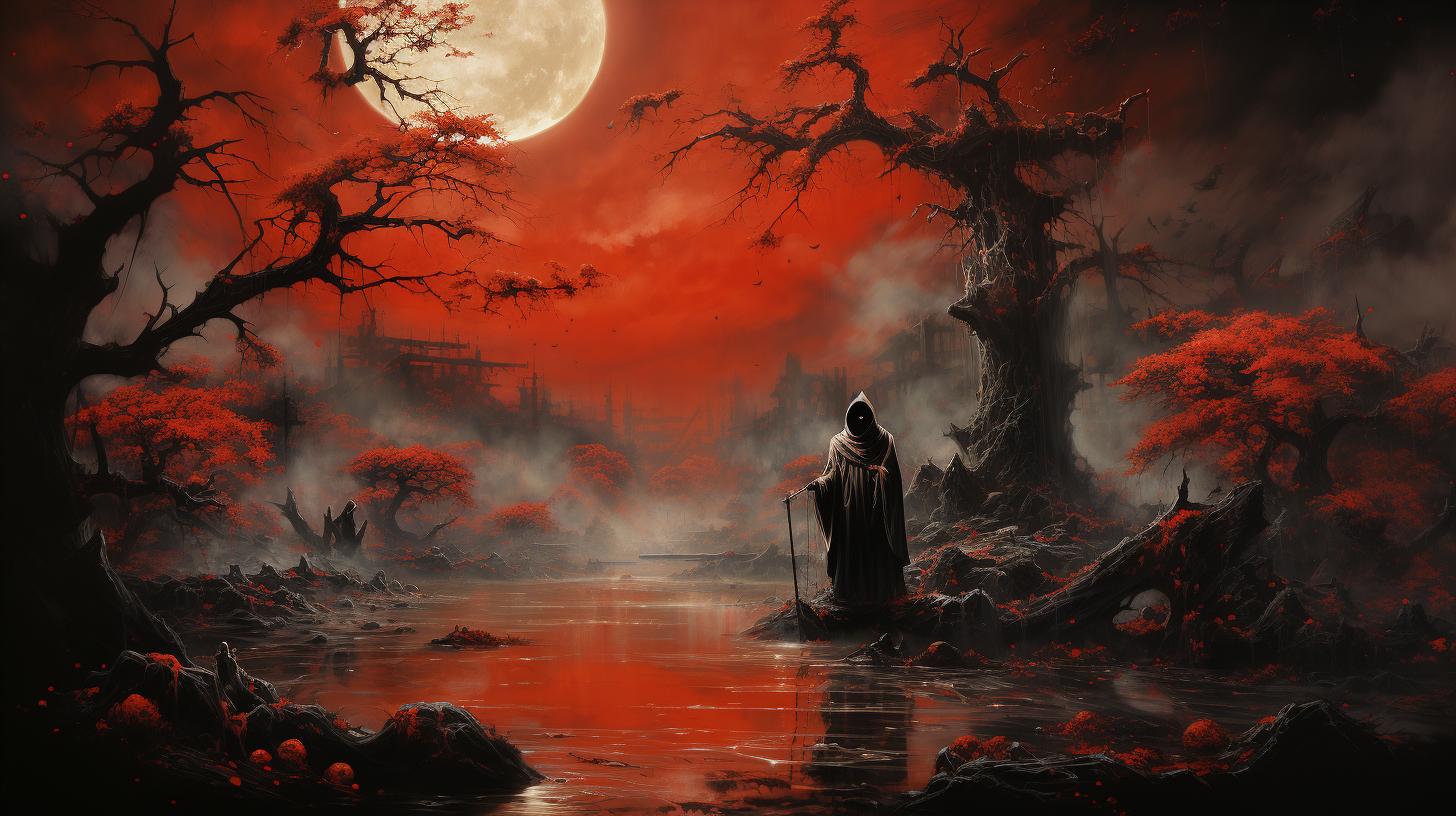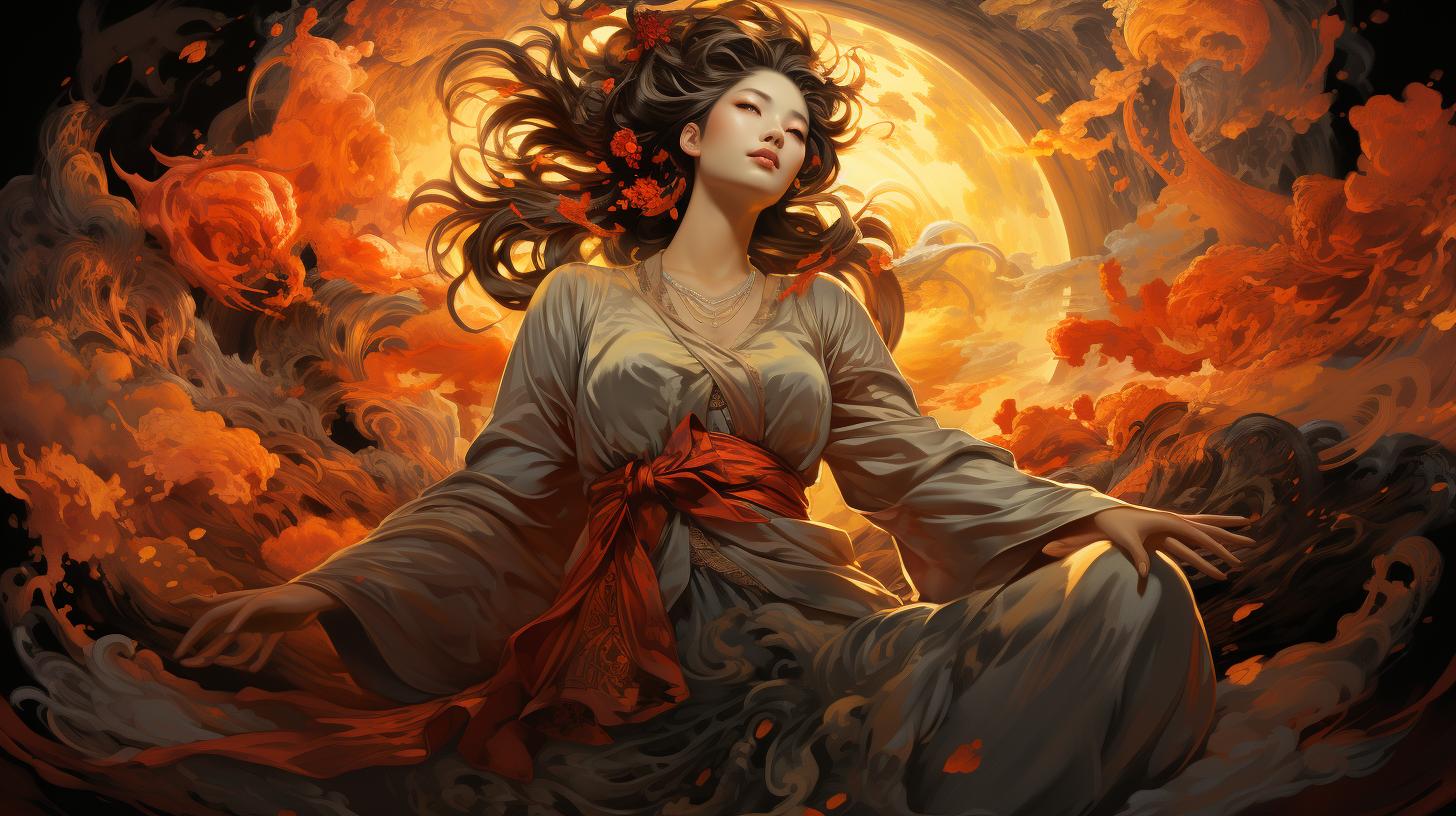Ninigi: Exploring the Enchanting Japanese Mythology of Divine Rule
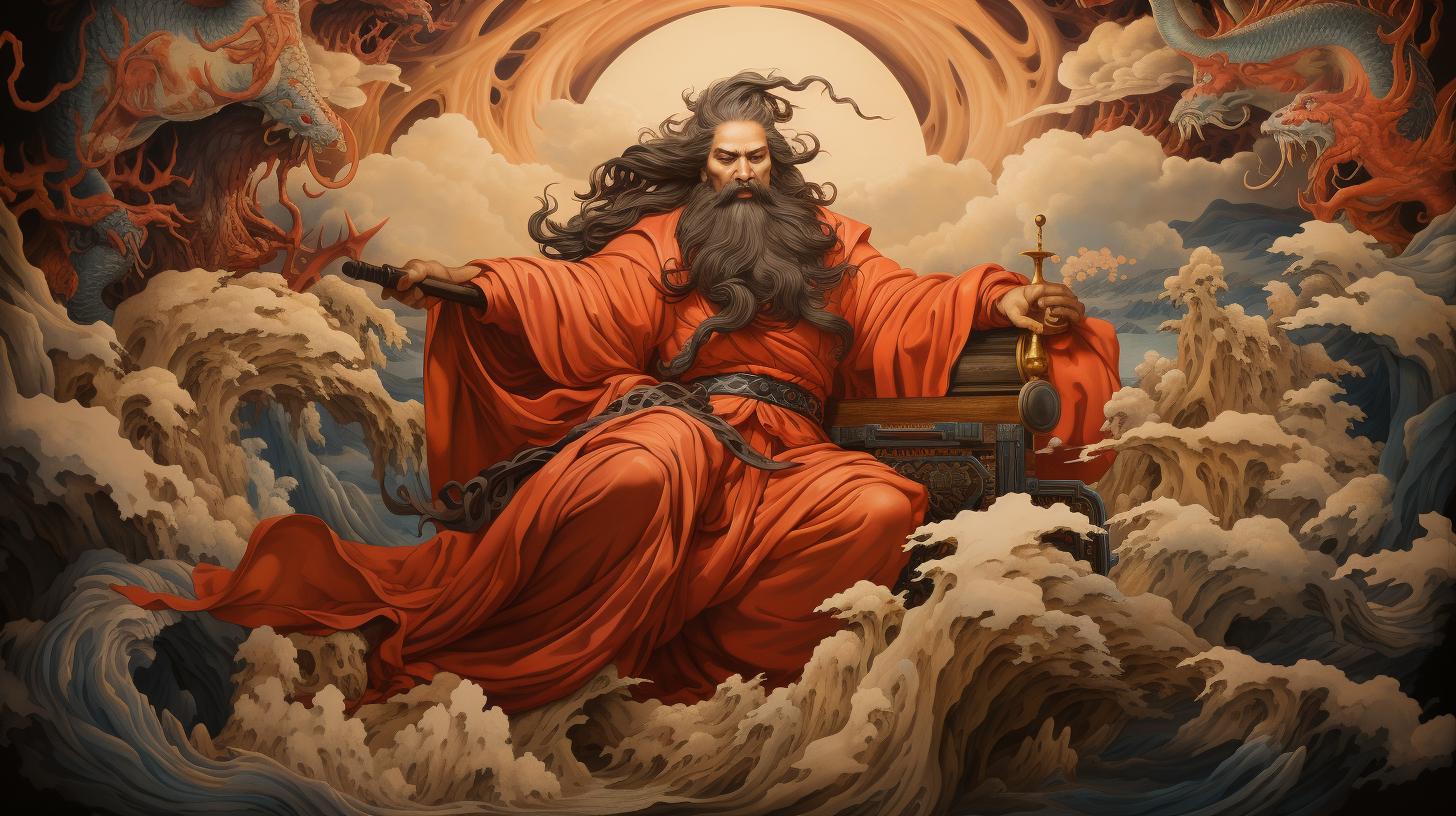
Ninigi japanese mythology tells the story of Ninigi, grandson of Amaterasu, the sun goddess. Sent to Earth to establish the divine origin of the Yamato clan, the Imperial House of Japan, Ninigi received three symbols of authority: a jewel, a mirror, and a sword.
He landed in Kyushu, built a palace, and with the help of other deities, pacified the land, introducing the principles of shintoism. His marriage to Sakuya-hime, who later became the goddess of Mount Fuji, resulted in a lineage that produced the first emperor of Japan, Toyo-mike-nu.
This mythological tale holds great significance in Japanese history and Shinto traditions.
Ninigi: The Grandson of Amaterasu
Ninigi, the grandson of Amaterasu, holds a significant role in Japanese mythology as the sacred figure sent to Earth to establish the divine origin of the Yamato clan. His lineage traces back to the powerful sun goddess, Amaterasu, known as the deity of the sun.
It is through Ninigi that the imperial bloodline of Japan is believed to have descended.
The Lineage of Ninigi
Ninigi’s lineage can be traced back to the divine origins of the Yamato clan. As the grandson of Amaterasu, Ninigi was chosen as the bearer of the divine legacy. His family lineage is deeply intertwined with the mythological and historical tapestry of Japan, connecting the present imperial family to their sacred past.
Role of Amaterasu in Ninigi’s Mission
Amaterasu played a crucial role in Ninigi’s mission to establish divine rule on Earth. As the deity of the sun, Amaterasu bestowed upon Ninigi her blessings and guidance, recognizing his capacity to bring order and prosperity to the land.
Her support and influence guided Ninigi in his endeavors and granted him the authority to rule as a divine leader.
Three Symbols of Authority Bestowed by Amaterasu
Amaterasu equipped Ninigi with three symbols of authority to aid him in his mission. These sacred objects were a jewel, a mirror, and a sword. Passed down through generations, these artifacts, collectively known as the Imperial Regalia of Japan, symbolize the divine legitimacy of the imperial family reigning in Japan.
Even to this day, these symbols continue to be revered and are utilized by the current imperial family.
Ninigi’s Journey to Earth
Ninigi, the grandson of Amaterasu, embarked on a momentous journey to Earth, entrusted with the divine task of establishing the lineage of the Yamato clan. This journey involved significant events and achievements that shaped Japanese mythology and history.
Arrival on Kyushu Island
Ninigi’s journey led him to the island of Kyushu, where he landed gracefully, marking the beginning of his mission. As he set foot on the island, Ninigi carried with him the symbols of authority bestowed upon him by Amaterasu.
Establishment of a Palace and Pacification of the Land
Determined to fulfill his divine mission, Ninigi wasted no time in establishing a magnificent palace on Kyushu Island. Accompanied by other gods and leaders, he initiated the process of pacifying the land, bringing stability and peace to the realm.
Introduction of Shintoism and its Principles
In the course of his journey, Ninigi played a pivotal role in introducing and promoting the principles of Shintoism. Guided by his divine purpose, he laid the foundation of this indigenous religion, emphasizing the reverence for nature spirits and the worship of ancestors.
The Marriage to Sakuya-hime
The marriage of Ninigi and Sakuya-hime is a significant event in Japanese mythology, intertwining divine lineage with the natural world. Let’s explore the details of this enchanting union.
Encounter with Sakuya-hime
Ninigi’s path crossed with Sakuya-hime, a divine entity embodying the essence of beauty and growth.
Their meeting was filled with awe-inspiring grace and a magnetic connection. Sakuya-hime’s presence captivated Ninigi, drawing him towards a profound destiny.
Marriage and Children of Ninigi and Sakuya-hime
Ninigi and Sakuya-hime united in holy matrimony, symbolizing the union of heaven and earth. From their sacred bond, three children were born, each carrying the divine bloodline of their parents. Their descendants would play pivotal roles in shaping Japanese history and culture.
Sakuya-hime’s Transformation into the Goddess of Mount Fuji
After their marriage, Sakuya-hime underwent a transformative journey, becoming the revered goddess of Mount Fuji. This majestic peak, standing tall and serene, became a sacred symbol of beauty, resilience, and spiritual significance in Japanese folklore.
- A divine union intertwining Ninigi’s lineage and Sakuya-hime’s radiance
- Three children born from their sacred bond, continuing the divine bloodline
- Sakuya-hime’s metamorphosis into the revered goddess of Mount Fuji
Within this profound story of Ninigi’s marriage to Sakuya-hime, we witness the fusion of gods and mortals, celestial realms and earthly realms, leaving an indelible mark on Japanese mythology and cultural heritage.
The Lineage of Ninigi
The lineage of Ninigi, the prominent figure in Japanese mythology, encompasses several intriguing tales and significant events. From Hohodemi’s descent and the tale of the abandoned child to the subsequent adoption and marriage within the family, this lineage unfolds with captivating narratives.
Finally, the lineage culminates with Toyo-mike-nu, who emerges as the first emperor of Japan, establishing a regal line that claims divine origins.
Hohodemi’s Descent and Abandoned Child
Within Ninigi’s lineage, Hohodemi’s descent represents a pivotal juncture. Hohodemi, Ninigi’s son, had a child with the daughter of the sea god. Tragically, this child was abandoned but was fortunate enough to be raised by their aunt.
This remarkable tale not only showcases the power of familial bonds but also sets the stage for subsequent events within the lineage.
Adoption and Marriage Within the Family
The lineage of Ninigi takes an unexpected turn as the abandoned child, raised by their aunt, eventually marries her. This unique adoption and marriage within the family give rise to the birth of four children, each contributing their own significance to the ongoing mythology.
It is within this context that the primeval roots of the imperial family intertwine, setting the stage for the historical and cultural legacy of Japan.
Toyo-mike-nu: The First Emperor of Japan
The culmination of Ninigi’s lineage manifests through the emergence of Toyo-mike-nu.
As the youngest child of the aforementioned marriage, Toyo-mike-nu assumes the mantle of the first emperor of Japan. This pivotal role solidifies the divine origin claims of the imperial lineage, lending an enduring legacy to Ninigi’s journey and making an indelible mark on Japanese history.
Ninigi’s Role in Japanese History and Shintoism
Ninigi’s lineage holds a significant place in Japanese history and the development of Shintoism. The impact of Ninigi’s rule resonates even in present-day Japan, with its integration into the imperial family, influence on Japanese culture, and continued significance in Shinto traditions.
Integration of Ninigi’s lineage into the imperial family
The descendants of Ninigi, particularly his son Toyo-mike-nu, became the first emperors of Japan, establishing a royal bloodline that claimed divine origins. This integration of Ninigi’s lineage into the imperial family solidified the symbolic connection between Japanese emperors and the gods.
The Yamato dynasty, the current ruling dynasty of Japan, traces its lineage back to Ninigi, reinforcing the importance of his role in Japanese history.
Influence of Ninigi’s rule on Japanese culture
Ninigi’s rule and the introduction of the Yamato clan played a significant role in shaping Japanese culture.
The principles established by Ninigi, including the pacification of the land and the introduction of Shintoism, laid the foundation for Japan’s cultural and religious practices. Shinto, as Japan’s indigenous religion, influenced various aspects of Japanese life, including art, architecture, festivals, and spiritual beliefs, all stemming from the rule of Ninigi and his descendants.
Present-day significance of Ninigi in Shinto traditions
In contemporary Japan, Ninigi is still revered within Shinto traditions. His role as a divine ancestor and the establishment of the imperial lineage connects the present-day imperial family with ancient mythology.
The Imperial Regalia of Japan, consisting of the sacred mirror, sword, and jewel, are believed to be the very symbols Ninigi received from Amaterasu. These regalia, associated with Ninigi’s authority, continue to be part of important ceremonial events in the imperial family, highlighting the ongoing significance of Ninigi in Japanese culture and Shinto practices.
.

